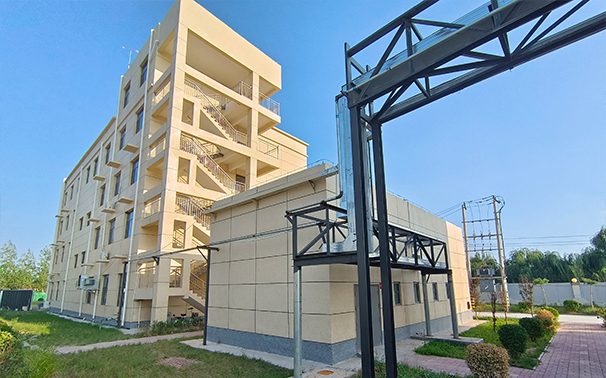chemical coagulation and flocculation water treatment
Chemical Coagulation and Flocculation in Water Treatment
Water treatment is essential for ensuring safe and clean drinking water, as well as for the protection of aquatic ecosystems. Among the various techniques employed in water treatment processes, chemical coagulation and flocculation play a crucial role in effectively removing suspended solids, colloids, and pathogens from water. This article discusses the principles, processes, and significance of chemical coagulation and flocculation in water treatment.
Principles of Coagulation and Flocculation
Coagulation refers to the process of aggregating small particles into larger clusters or flocs. This is achieved by adding chemicals called coagulants, which neutralize the charges on the particles, enabling them to stick together. Common coagulants include aluminum sulfate (alum), ferric chloride, and polyaluminum chloride. These chemicals create positively charged species that counteract the negative charges on colloidal particles, promoting aggregation.
Flocculation, on the other hand, is a subsequent process that involves the gentle mixing of the water to facilitate the growth and formation of flocs from these smaller aggregates. This is usually achieved through the addition of a flocculant, which is often a polymer that enhances the settling characteristics of the flocs. The combined effects of coagulation and flocculation lead to the formation of larger, heavier aggregates that can easily be removed from the water through sedimentation or filtration processes.
The Chemical Process
The effectiveness of coagulation and flocculation is influenced by various factors, including the type of coagulant used, dosage, pH of the water, temperature, and the nature of impurities present. The process typically involves several steps
1. Rapid Mixing After adding the coagulant, rapid mixing is employed to ensure thorough distribution and chemical interaction among particles. 2. Slow Mixing (Flocculation) Following initial mixing, the water is subjected to slow agitation which helps larger flocs to form without breaking them apart.
3. Sedimentation Once flocs have formed, the water is allowed to sit, enabling the denser aggregates to settle at the bottom.
4. Filtration Finally, any remaining suspended particles, along with the settled flocs, are removed through filtration.
Applications of Coagulation and Flocculation
Chemical coagulation and flocculation are widely used in various water treatment applications, including
chemical coagulation and flocculation water treatment

- Drinking Water Treatment The primary goal is to remove turbidity, bacteria, and viruses, making water safe for human consumption. - Wastewater Treatment In industrial and municipal settings, these processes help in the removal of pollutants, organic matter, and heavy metals. - Stormwater Management Coagulation and flocculation techniques can be applied to treat urban runoff, reducing contaminants flowing into water bodies.
Benefits of Coagulation and Flocculation
The use of chemical coagulation and flocculation offers several advantages
1. Efficiency in Removal These processes significantly enhance the removal rates of suspended solids and colloidal particles, often achieving high turbidity reduction.
2. Cost-Effectiveness The chemical treatments can be economically advantageous compared to other treatment methods, especially in large-scale operations.
3. Flexibility Different coagulants can be tailored to suit specific water quality issues, allowing for a versatile application in various settings.
4. Improved Water Quality The processes not only enhance clarity but also reduce pathogen levels, ensuring cleaner and safer water.
Challenges and Considerations
Despite its many benefits, chemical coagulation and flocculation face several challenges
- Chemical Handling The use of chemicals requires careful handling and management to avoid adverse environmental impacts and ensure worker safety. - Residuals Management The generation of sludge during the treatment process necessitates proper disposal or further treatment. - Regulatory Compliance Water treatment facilities must comply with stringent regulations regarding chemical usage and water quality standards, necessitating ongoing monitoring and adjustments.
Conclusion
Chemical coagulation and flocculation are pivotal techniques in modern water treatment processes, offering efficient solutions for clarifying contaminated water and ensuring its safety for human consumption and environmental protection. As water pollution challenges grow, the continuous optimization and innovation in coagulation and flocculation methods will play an essential role in supporting sustainable water management practices worldwide. Emphasizing research and development, alongside best practices in chemical usage, will further enhance these processes, ultimately leading to improved public health and environmental outcomes.
-
lk-319-special-scale-and-corrosion-inhibitor-for-steel-plants-advanced-solutions-for-industrial-water-systemsNewsAug.22,2025
-
flocculant-water-treatment-essential-chemical-solutions-for-purification-processesNewsAug.22,2025
-
isothiazolinones-versatile-microbial-control-agents-for-industrial-and-consumer-applicationsNewsAug.22,2025
-
scale-inhibitor-key-solutions-for-water-system-scale-preventionNewsAug.22,2025
-
organophosphonates-versatile-scale-inhibitors-for-industrial-water-systemsNewsAug.22,2025
-
scale-and-corrosion-inhibitor-essential-chemical-solutions-for-water-system-maintenanceNewsAug.22,2025





